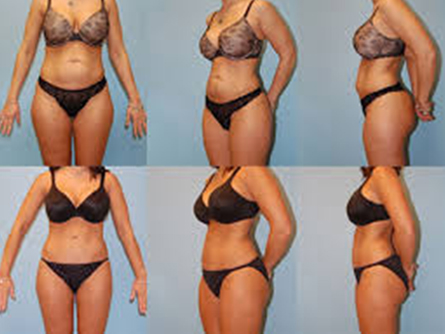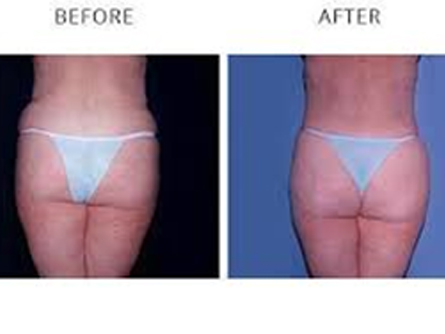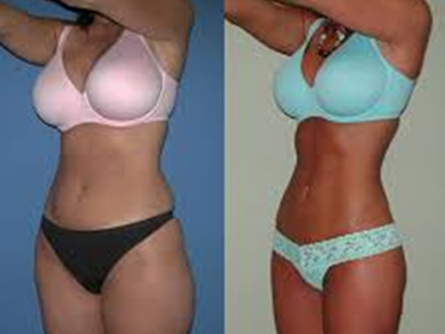
Liposuction is a cosmetic procedure that removes fat that one can’t seem to get rid of through diet and exercise. Other names for liposuction include lipoplasty and body contouring.
Liposuction isn't typically considered an overall weight-loss method or a weight-loss alternative. You may be a candidate for liposuction if you have too much body fat in specific spots but otherwise have a stable body weight. While liposuction is best known as a fat removal procedure, it is also one of the best procedures to help a patient refine his or her shape. In fact, cosmetic surgeons often use liposuction to refine the results of other procedures, as no other technique allows for such detailed improvements in body contour.
A plastic surgeon usually does the procedure on your hips, belly, thighs, buttocks, back, arms, or face to improve their shape. But liposuction can also be done with other plastic surgeries, including facelifts, breast reductions, and tummy tucks.
Liposuction is used to remove fat from areas of the body such as:
- Abdomen
- Upper arms
- Buttocks
- Calves and ankles
- Chest and back
- Hips and thighs
- Chin and neck
In addition, liposuction can sometimes be used for breast reduction or treatment of gynecomastia.
When you gain weight, fat cells increase in size and volume. Inturn, liposuction reduces the number of fat cells in a specific area. The amount of fat removed depends on the appearance of the area and the volume of fat. The resulting contour changes are generally permanent — as long as your weight remains stable
Types of Liposuction
There are just a few different liposuction techniques. But what they all have in common is the use of a thin tube, called a cannula, connected to a vacuum to suction the fat from your body.
Tumescent liposuction is the most common technique. Your surgeon injects a sterile solution into the area where the fat is to be removed. It consists of saline -- which is salt water - along with lidocaine and epinephrine. The solution makes it easier to suction the fat with less blood loss and pain.
Ultrasound-assisted liposuction, or UAL, uses sound waves energy under your skin to rupture the cell walls of the fat. This liquefies the fat so it can be suctioned out.
Laser-assisted liposuction, or SmartLipo, uses a laser to produce a burst of energy to liquefy the fat. During LAL, the surgeon inserts a laser fiber through a small incision in the skin and emulsifies fat deposits. The fat is then removed via a cannula.




Procedure
Liposuction is an outpatient procedure and can be safely performed using local anesthesia, intravenous sedation, or local anesthesia, depending on the nature of the procedure. Your cosmetic surgeon will recommend the anesthesia method that is most appropriate for your needs.
Your cosmetic surgeon will make one or more small incisions near the treatment area. A cannula, or thin tube, is inserted through these incisions to loosen excess fat beneath the skin. Then, the fat is suctioned out. The entire procedure can take under an hour or up to 3 hours or longer, depending on the number of areas treated.
Life After Liposuction
Today’s advanced liposuction techniques are designed to minimize swelling, trauma and discomfort, and when the procedure is performed by a qualified cosmetic surgeon, recovery from liposuction can be remarkably quick. Many patients return to work just a few days after their procedures, depending on the physical requirements of their jobs and the extent of their procedures. While your cosmetic surgeon can prescribe pain medication, most patients find over the counter options more than enough to manage any post-operative soreness.
Your cosmetic surgeon may give you a compression garment to wear for a few weeks following surgery. This helps to minimize swelling and encourage optimal skin contraction. With proper care, scars should fade significantly over the months following surgery; in many cases, scars are barely visible after a year or so.
Results can last permanently with proper care
Liposuction removes fat cells from your body, and these fat cells will not grow back. However, it is important to maintain a stable weight to ensure that your new look remains optimal. If you gain a significant amount of weight in the future, your overall appearance is likely to change as your body stores excess fat in other locations.
When performed by a qualified cosmetic surgeon, liposuction is a safe procedure and an excellent way to improve the shape of your body. The best way to decide if liposuction is right for you is to consult with a certified cosmetic/plastic surgeon.
